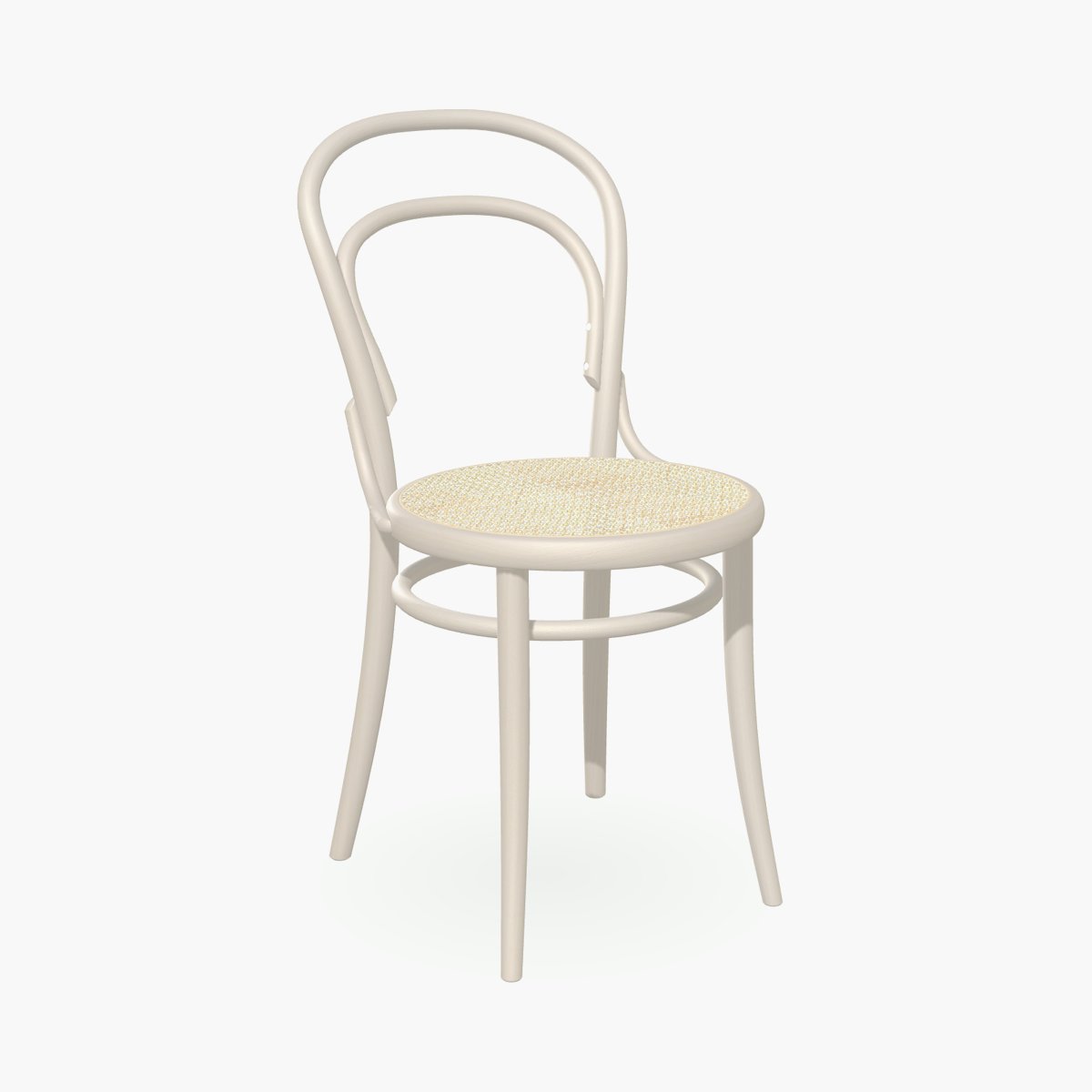With all the talk about form and function, we sometimes overlook the importance of the advances in materials technology in the 20th century. Without doubt, the development of bent and laminated wood veneers was one of those significant innovations, making it possible to construct furniture using fewer pieces and allowing designers to obtain greater visual unity and fluidity. One can hardly imagine the work of Alvar Aalto or Charles and Ray Eames without this technology.
Michael Thonet is one of the most important innovators in bentwood furniture making. Thonet patented a process of bending under heat several layers of wood veneer glued together and laminated, and he used the new material to create curved back-rails and legs on chairs, contoured headboards for beds and scrolled arms for sofas.
By 1900, the curvilinear furniture made possible by Thonet’s techniques was widely produced by furniture manufacturers in the United States, where the process was exploited for mass production of simple, inexpensive chairs and tables.
Thonet also developed a method of bending solid wood, and his bent solid and laminated beech chairs with woven cane seats and backs remain among the most successful industrial designed products of all time. Josef Hoffmann, Otto Wagner and Adolf Loos, all of whom designed for Thonet, made use of his bentwood techniques to create classic chair designs still produced or copied today. Le Corbusier later used Thonet furniture in his Pavillon de l’Esprit Nouveau at the 1925 Paris Exposition des Arts Décoratifs.
Michael Thonet is one of the most important innovators in bentwood furniture making. Thonet patented a process of bending under heat several layers of wood veneer glued together and laminated, and he used the new material to create curved back-rails and legs on chairs, contoured headboards for beds and scrolled arms for sofas.
By 1900, the curvilinear furniture made possible by Thonet’s techniques was widely produced by furniture manufacturers in the United States, where the process was exploited for mass production of simple, inexpensive chairs and tables.
Thonet also developed a method of bending solid wood, and his bent solid and laminated beech chairs with woven cane seats and backs remain among the most successful industrial designed products of all time. Josef Hoffmann, Otto Wagner and Adolf Loos, all of whom designed for Thonet, made use of his bentwood techniques to create classic chair designs still produced or copied today. Le Corbusier later used Thonet furniture in his Pavillon de l’Esprit Nouveau at the 1925 Paris Exposition des Arts Décoratifs.
5
Results
5
Results
View






